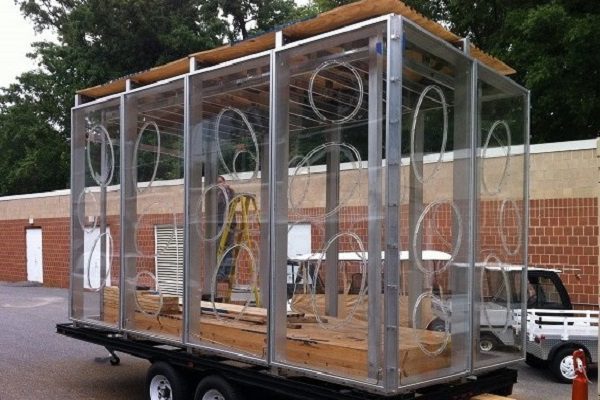Work of IDRL Recognized in The Architects Newspaper

A long-term multidisciplinary research project by the Integrated Design Research Lab (IDRL), under the direction of Associate Professor of Architecture Kyoung-Hee Kim, was featured in The Architects Newspaper on May 3. The article describes the microalgae façade system that Dr. Kim and the IDRL team have been investigating since 2012, most recently in prototyping funded with a 2017 AIA Upjohn Research Initiative Grant.
Bringing together faculty and students from the School of Architecture with members of the engineering, biology, and construction management programs, the large IDRL team carried out a feasibility study focused on the speculative retrofitting of the Denny Building on the UNC Charlotte campus. In 2014, they constructed a prototype of four-by-eight-foot glass and metal-frame panels (pictured above). In this system, bands of microalgae, growing inside the panels, filter carbon dioxide out of the air as it circulates through the system; as it fills with sequestered carbon, the algae can be collected and converted into biofuel.

More recently, Dr. Kim and her colleagues have refined their concept via smaller scale prototypes created in the IDRL. They are applying for a National Science Foundation Innovation Corps (I-Corps) grant so that they can carry out a discovery process for different building sectors. “We are aiming for initial commercialization of practical and cost-effective applications in both new-build and retrofit buildings, while developing a series of prototypes with different end-use application in accordance with industry standards and building regulations,” she says.
Housed in the School of Architecture in the Storrs building, the Integrated Design Research Lab is an interdisciplinary research platform for integrating architecture design and building technologies. Dr. Kim became IDRL director in 2018. A registered architect, her expertise lies in performance-based design, innovative building systems integration, and high performance facades as a way to improve the sustainability of the built environment.